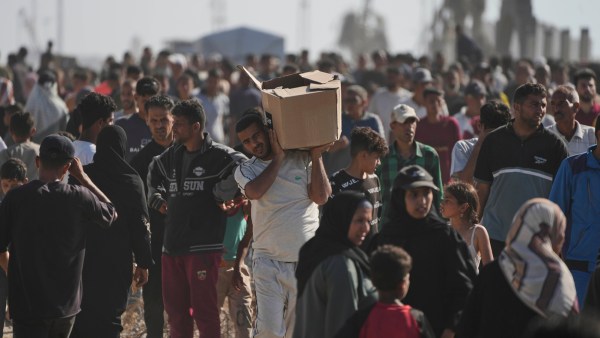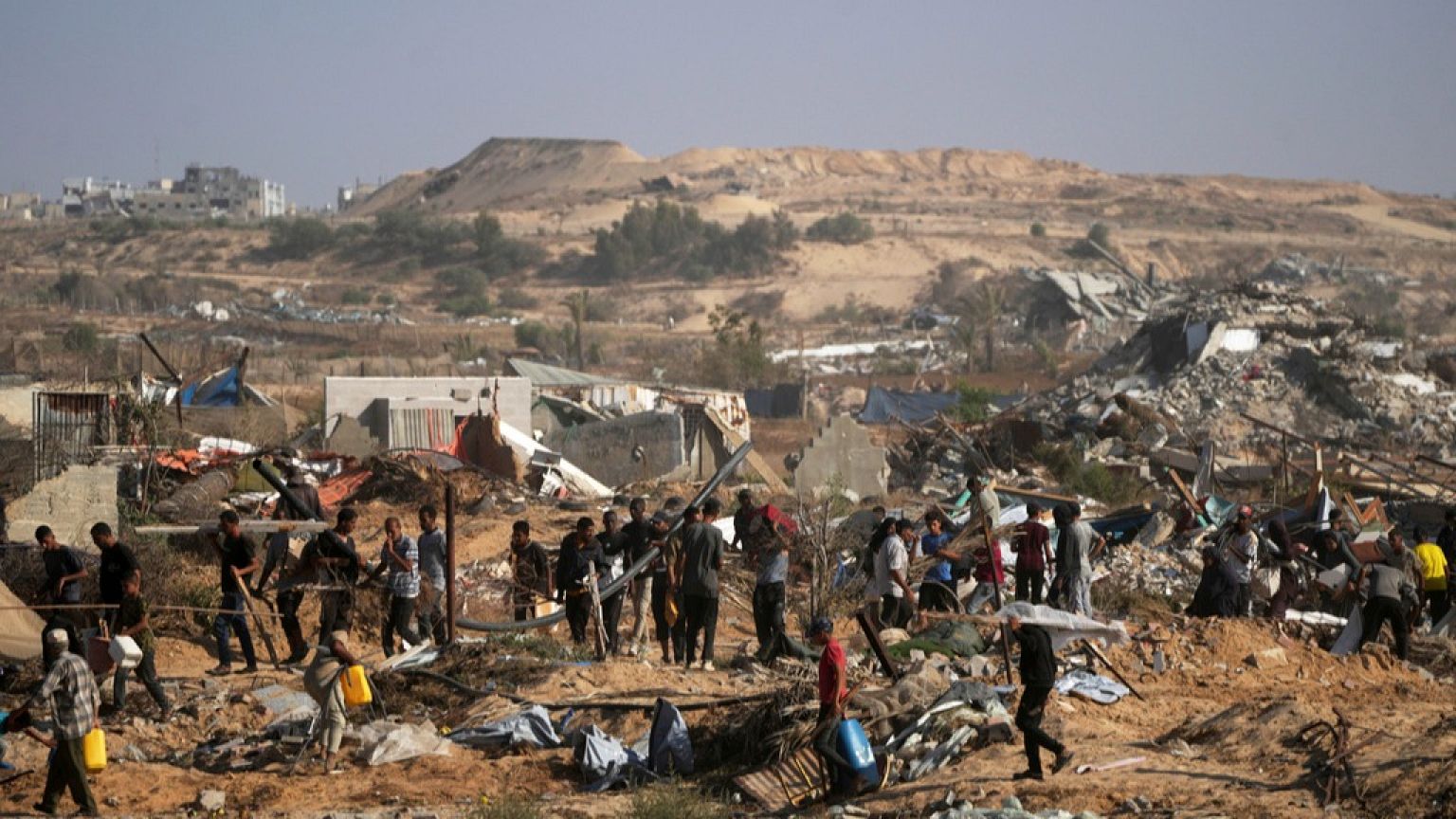Rafah, Gaza Strip — An aid distribution center run by the controversial US and Israeli-backed Gaza Humanitarian Foundation (GHF) descended into chaos just one day after launching operations in southern Gaza. Thousands of desperate Palestinians overwhelmed the site, tearing down fences and clashing with each other in a bid to secure food supplies.
The dramatic scenes unfolded in Rafah, a city already burdened by heavy Israeli bombardment and a looming famine after nearly three months of aid blockades. Videos from the scene show men, women, and children surging past security perimeters, prompting Israeli troops to fire warning shots to regain control.
“It was a humiliating experience,” said one witness to Arabic. “People are exhausted — willing to risk their lives just to feed their children.”
Controversial Operation Raises Alarm Among Aid Agencies

The Gaza Humanitarian Foundation was created as an alternative to the UN-led aid mechanism. It uses American private contractors for security and Israeli military protection around its aid sites. The plan, however, has faced sharp criticism for bypassing traditional humanitarian protocols.
The UN called the video footage from the Rafah incident “heartbreaking” and reaffirmed its commitment to delivering aid through a detailed, neutral plan backed by international donors.
“A meaningful scale-up of humanitarian operations is essential to stave off famine and meet the needs of all civilians wherever they are,” said UN spokesperson Stéphane Dujarric.
Hamas, Israel, and US at Odds Over Aid Control
Israel argues that bypassing UN aid channels is necessary to stop Hamas from seizing humanitarian supplies, an accusation Hamas denies. The GHF, meanwhile, claimed delays at its Rafah site were due to “blockades imposed by Hamas,” without offering evidence.
Reports also surfaced that Hamas had issued threats against NGOs cooperating with GHF and warned civilians not to rely on its aid distribution system. Despite these warnings, thousands turned up at the site, leading to mayhem and further displacement.
Leadership Shake-up and Humanitarian Fallout
Amid the controversy, GHF’s executive director Jake Wood resigned on Sunday, citing the organization’s failure to adhere to core humanitarian principles like neutrality and independence. The board dismissed the criticism, claiming opponents were “more focused on tearing this apart than getting aid in.”
The GHF says it aims to feed up to one million people in Gaza by week’s end, nearly half of the enclave’s population. Yet critics, including major global humanitarian organizations, warn this model of aid delivery could establish dangerous precedents worldwide.
Dire Conditions Worsen in Gaza

As Gaza reels from continued Israeli military operations and humanitarian constraints, the threat of mass starvation grows. A UN-backed food security assessment indicates over 500,000 Palestinians face imminent starvation. Meanwhile, more than 400 aid trucks remain undelivered at the Kerem Shalom crossing due to coordination issues and safety concerns.
Israel resumed its offensive in Gaza on May 19, aiming for full control of the enclave. Prime Minister Benjamin Netanyahu has pledged to allow only “basic” levels of food in under international pressure, amid mounting casualties and diplomatic fallout.
As the situation escalates, the humanitarian divide continues to widen — with international agencies and state actors at odds, and civilians bearing the brunt of a fractured aid ecosystem.
For ongoing updates on the Gaza crisis and global humanitarian efforts, follow our World News section.









